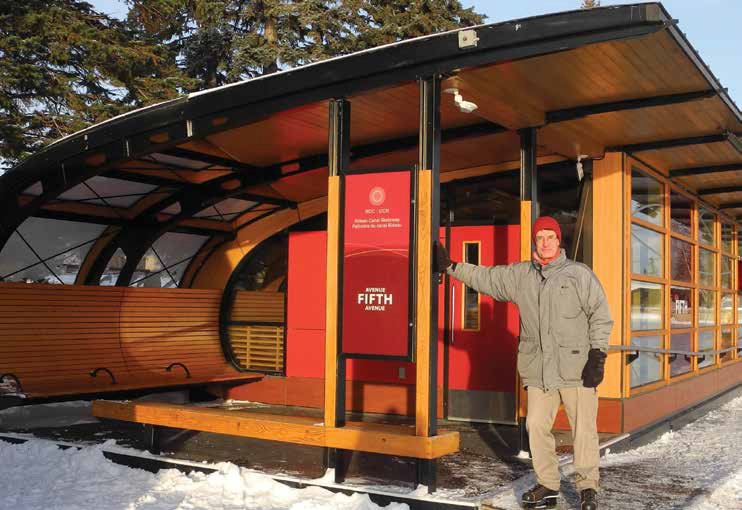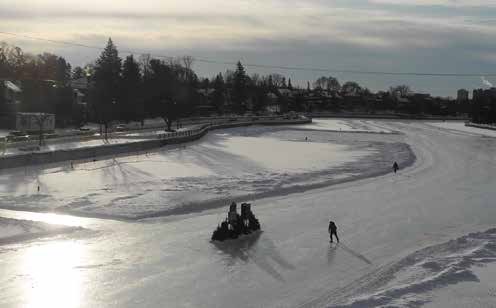John Dance
So what’s free, better than the Rockefeller Center, a recommended bucket-list activity, half a century old and with its heart in Old Ottawa East?
The answer is obvious: the Rideau Canal Skateway.
About one-third of the nearly eight-kilometre-long outdoor rink runs along the western boundary of Old Ottawa East. The middle of the skateway is bisected by the new Flora Footbridge.
A quick search of the internet confirms what many of us already know – the Skateway is the world’s best outdoor rink, followed by the rink at New York’s Rockefeller Center and other rinks in cities almost the equivalent of Ottawa, like Paris, Moscow and London. Factually, according to the Guinness Book of Records, the Skateway is the “largest” rink in the world with an area equivalent to 90 Olympic-sized hockey rinks.
More rigorous internet searching shows that skating on our rink is on the list of the best outdoor Canadian bucket-list activities. Often, during the winter, you’ll meet tourists from Europe and the United States who have come to Ottawa just to experience the Skateway.
For some Ottawa Easters, like Alex Watson of Glengarry Road, the Skateway is a delightful winter way to get to work every day, although skating downtown is so quick that it takes more time to put on and take off your skates than to actually skate the distance.

Old Ottawa East architect Anthony Leaning with CSV Architects designed the warm, comfortable and iconic skate
shelters of the Skateway. Photo by John Dance
Anthony Leaning, another local resident, has played a key role in improving the skating experience. Eight years ago, Leaning, with CSV Architects, designed the striking “change chalets” that provide warm, spacious and comfortable shelter for the million-plus skaters who use the Skateway in an average year. The shelters have won a number of awards for their unique and sustainable design.
Back in 1971, Douglas Fullerton, Chair of the National Capital Commission (NCC) and resident of Clemow Avenue just across the Canal from OOE, had the idea of the Skateway. “A team of NCC employees armed with brooms and shovels turned his idea into a reality when they cleared a small section of ice between the Mackenzie King and Laurier bridges near the National Arts Centre (NAC),” says Cédric Pelletier, NCC strategic communications advisor.

The Flora Footbridge marks the mid-point of the Skateway and provides
a perfect vantage point for watching skaters glide along in the early
morning sun. Photo by John Dance
Since then, creating and maintaining the rink has become more effective and the skateway now extends all the way from the NAC to Carleton University and the Dow’s Lake pavilion with a delightful diversion into Patterson Creek.
Skaters now experience a smoother surface and don’t trip on the many orange spray-painted pumping holes that used to run down the centre of the entire route. Today’s flooding technique has been mechanized with the key component being the “Froster FW60,” a water dispersion vehicle that with its extended arms coats a wide swath as it moves along the Skateway.
The tanker-like contraption is often parked just south of Clegg Street and fills in the cracks and divots on the ice surface much more effectively than the old hose flooding method. And because of its large tank of water, it doesn’t have to be filled frequently. Relatively few ice holes now need to be drilled and they can be situated more safely on the edges of the rink.
This year, the Skateway opened on January 18, the same date it opened the first year. But the first year, the season lasted 90 days, which remains a record. Over the last half-century, the skating season has been as short as 34 days and climate change with its more variable weather patterns and warmer temperatures has made ice maintenance a real challenge.
So it’s a real question whether the Skateway will endure for another half-century. But it’s time to go skating and enjoy it now, even as we all work towards less climate change.







